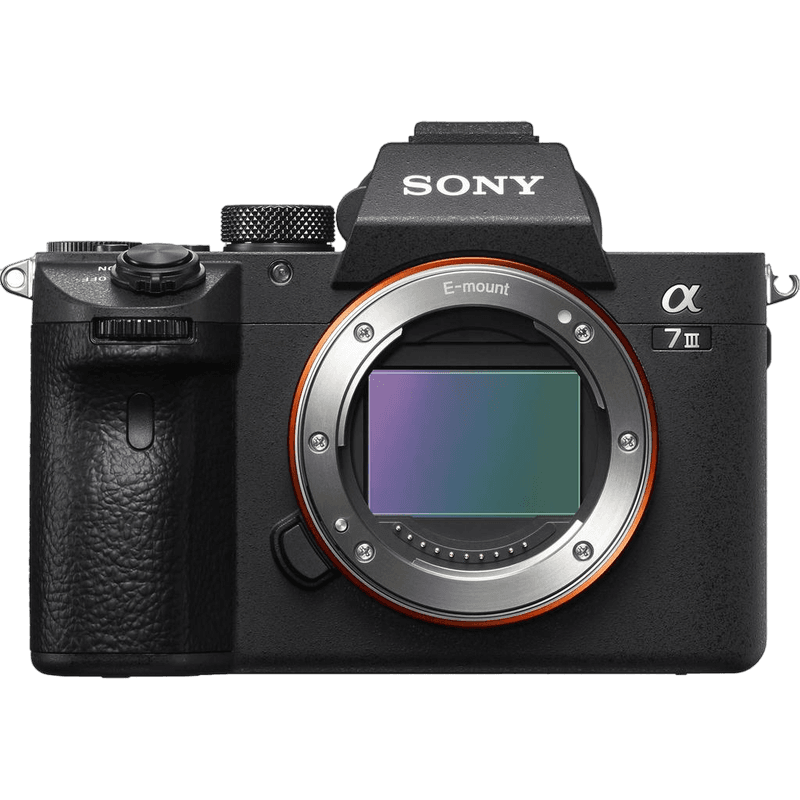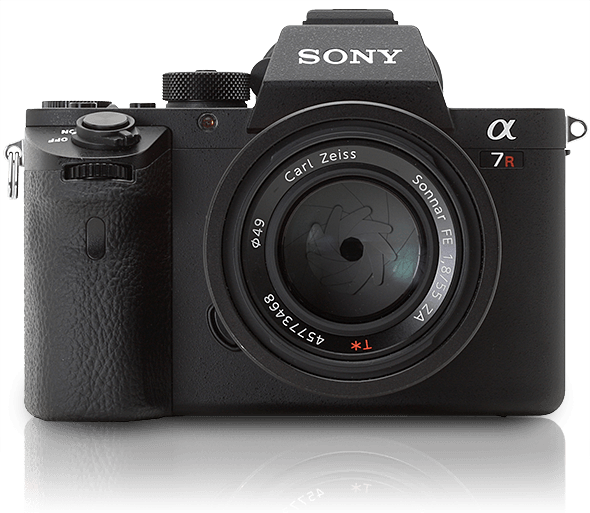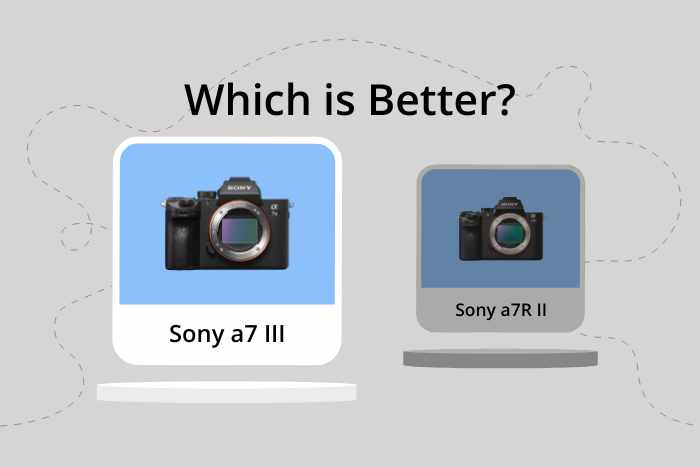Sony a7 III vs a7R II Comparison
Sony a7 III

Sony a7R II

The Sony a7 III emerges as the winner with a score of 81, while the Sony a7R II trails behind at 70/100. Both cameras are mirrorless and have similar dimensions, with the a7 III measuring 127x96x74mm and weighing 650g, and the a7R II measuring 127x96x60mm and weighing 625g.
The a7 III outperforms the a7R II due to its more recent release in 2018, as opposed to the a7R II’s 2015 release, and its lower launch price of $2000 compared to the a7R II’s $3198. This makes the a7 III a more cost-effective and updated option for consumers.
On the other hand, the a7R II has a slight advantage in terms of weight, being 25g lighter than the a7 III. This difference, however, may not significantly impact the overall experience for users.
Taking these factors into account, the Sony a7 III is the better option for its updated features and lower price, while the a7R II’s only advantage lies in its marginally lighter weight.
Sony a7 III vs a7R II Overview and Optics
The Sony a7 III and Sony a7R II both receive an optics score of 81/100, indicating no clear winner in this category. These cameras share several specifications, including a CMOS sensor, Bionz X processor, full-frame sensor size, Sony FE lens mount, and image stabilization.
The Sony a7 III has a 24.2-megapixel resolution and a shooting speed of 10 frames per second, making it a strong choice for fast-paced photography. Its DXOMARK sensor score is 96, which is slightly lower than the a7R II but still impressive. The a7 III’s lower megapixel count and faster shooting speed make it well-suited for capturing action shots and sports photography.
On the other hand, the Sony a7R II boasts a higher resolution with 42.4 megapixels, allowing for more detailed images. However, its shooting speed is slower at 5 frames per second, which may not be ideal for capturing fast-moving subjects. The a7R II has a DXOMARK sensor score of 98, which is slightly higher than the a7 III, indicating better overall image quality. The a7R II is better suited for photographers who prioritize image detail and resolution over speed.
Both cameras have their strengths and weaknesses, with the a7 III excelling in fast-paced photography and the a7R II providing superior image detail. Ultimately, the choice between these two cameras depends on the specific needs and preferences of the photographer.
Sony a7 III vs a7R II Video Performance
The Sony a7 III and Sony a7R II share similar video capabilities. Both cameras offer a maximum video resolution of 4K, with dimensions of 3840 x 2160 pixels, and a maximum video frame rate of 30fps. However, recent updates allow built-in time-lapse functionality for the a7 III.
The a7 III also features improved autofocus performance, which results in smoother and more accurate video focusing. This advantage allows users to capture high-quality videos with less effort and time spent on manual adjustments. The a7 III also has a longer battery life than the a7R II, enabling users to record more video footage without needing to swap out batteries.
On the other hand, the Sony a7R II has some advantages as well. It boasts a higher megapixel count, which can enhance the quality of still images extracted from video frames. This feature is particularly useful for those who want to use their camera for both video and photography purposes. Additionally, the a7R II is more affordable than the a7 III, making it a better option for budget-conscious consumers.
Considering these factors, both cameras have their respective strengths and weaknesses when it comes to video capabilities. The Sony a7 III is the better option for those who prioritize autofocus performance and longer battery life, while the Sony a7R II is more suitable for users who desire higher resolution stills from video and a lower price point.
Sony a7 III vs a7R II Features and Benefits
The Sony a7 III wins in the features category with a score of 81/100, while the Sony a7R II scores 57/100. Both cameras share some common specifications such as a 3-inch screen size, flip screen, absence of GPS, and WIFI connectivity.
The Sony a7 III outperforms the a7R II with its touchscreen capability and bluetooth connectivity. The touchscreen provides users with an intuitive and efficient way to navigate menus and change settings quickly. Bluetooth connectivity allows for seamless pairing with compatible devices, making it easier to transfer files and remotely control the camera.
On the other hand, the Sony a7R II has a higher screen resolution of 1,228,800 dots compared to the a7 III’s 921,600 dots. This results in a sharper and clearer display, which can be beneficial for photographers when reviewing images and adjusting settings.
While the Sony a7 III has a higher feature score, the a7R II’s superior screen resolution is an advantage to consider. However, the a7 III’s touchscreen and bluetooth capabilities make it a more versatile and user-friendly option. Ultimately, the choice between the two cameras will depend on the individual photographer’s preferences and priorities.
Sony a7 III vs a7R II Storage and Battery
The Sony a7 III outperforms the Sony a7R II in storage and battery with a score of 81 compared to 16/100. Both cameras accept SD/SDHC/SDXC and Memory Stick Duo/Pro Duo/Pro-HG Duo cards, but the a7 III has two memory card slots while the a7R II has only one.
The a7 III’s battery life is significantly longer, providing 750 shots per charge, whereas the a7R II lasts for only 290 shots. The a7 III uses the NP-FZ100 battery type, while the a7R II uses the NP-FW50.
In terms of storage and battery, the Sony a7 III is the clear winner with its dual memory card slots and longer battery life. The Sony a7R II falls short in this area, but it may offer advantages in other aspects such as resolution and image quality. Considering storage and battery alone, the Sony a7 III is the better choice.
Sony a7 III vs a7R II Alternatives
Still not ready to make a decision? Check out our other popular camera comparisons for inspiration:

